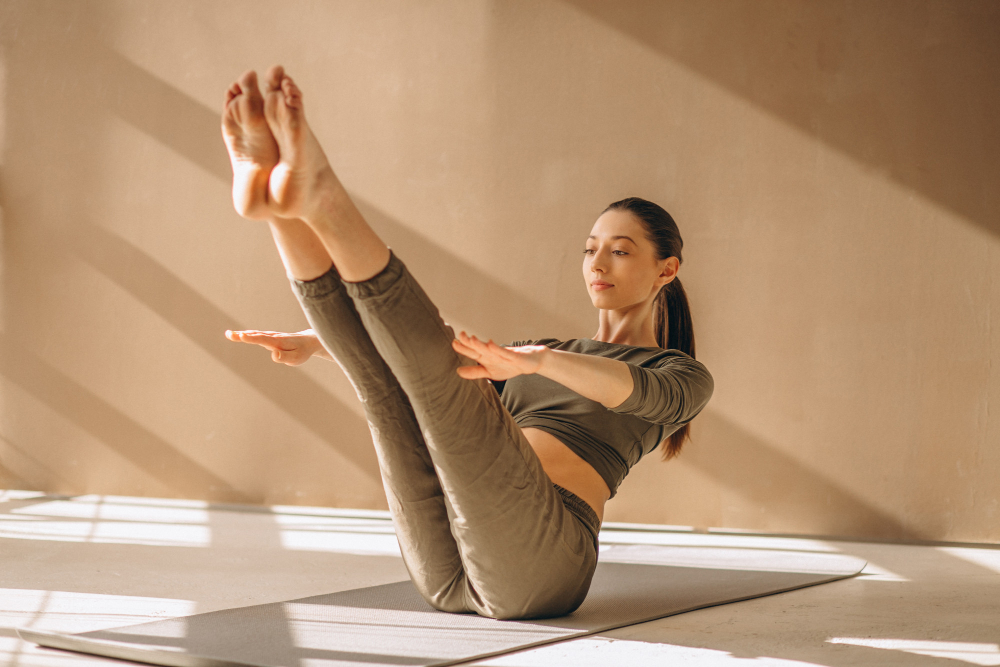Mastering the Pilates Hundred: A Comprehensive Guide to the Core Classic

July 28, 2024, 9:25 p.m.
The Pilates Hundred is more than just a classic exercise; it’s a cornerstone of the Pilates method and a testament to Joseph Pilates’ innovative approach to body conditioning. This exercise is renowned for its ability to enhance core strength, improve circulation, and build endurance. In this blog post, we'll dive deep into the Pilates Hundred, exploring its origins, benefits, proper execution, and variations.
The Origins of the Pilates Hundred
Joseph Pilates developed the Pilates method in the early 20th century, and the Hundred was one of his foundational exercises. It was designed to engage the entire body, focusing on the core muscles and improving overall fitness. Named for its goal of achieving 100 breath cycles, the Hundred combines rhythmic breathing with controlled movement, embodying Pilates' philosophy of mindful, purposeful exercise.
Why It’s Called the Hundred
The Hundred gets its name from the goal of performing 100 breaths during the exercise. This rhythmic breathing technique, paired with the physical movement, helps to stimulate circulation and increase endurance. Despite the name, the focus is more on maintaining the rhythm and form rather than strictly counting to 100.
The Benefits of the Pilates Hundred
-
Core Strength: The Hundred is a powerful core-strengthening exercise. It targets the rectus abdominis, obliques, and transverse abdominis, promoting a strong and stable core.
-
Improved Circulation: The rhythmic breathing pattern stimulates blood flow, which can help improve overall cardiovascular health and increase energy levels.
-
Enhanced Endurance: Performing the Hundred regularly can build endurance, both in the core muscles and overall body, contributing to better performance in other physical activities.
-
Mind-Body Connection: The exercise encourages concentration and body awareness, aligning with Pilates’ emphasis on the integration of mind and body.
-
Posture and Alignment: Engaging the core and maintaining proper form during the Hundred can help improve posture and spinal alignment.
How to Perform the Pilates Hundred
-
Starting Position:
- Begin by lying on your back on a mat with your knees bent and feet flat on the floor.
- Lift your head, shoulders, and upper back off the mat, reaching your arms forward, parallel to the floor.
- Extend your legs to a tabletop position (90 degrees at the hips and knees) or fully extend them to a 45-degree angle, depending on your level of strength and flexibility.
-
Breathing and Movement:
- Inhale deeply through your nose for a count of five while pumping your arms up and down.
- Exhale fully through your mouth for a count of five, continuing the arm movement.
- Aim to complete 10 sets of inhales and exhales, totaling 100 breaths.
-
Tips for Proper Form:
- Keep your core engaged throughout the exercise.
- Ensure your lower back is pressed into the mat to avoid arching.
- Maintain a neutral neck position; avoid straining or pulling on your head.
- Focus on controlled, small arm pumps rather than large, swinging movements.
Common Mistakes and How to Avoid Them
-
Arching the Lower Back: Ensure your lower back remains pressed into the mat to avoid strain on the spine. Engage your core muscles to support your lower back.
-
Holding the Breath: The Hundred is all about rhythmic breathing. Make sure you maintain a steady breath throughout the exercise to maximize its benefits.
-
Overextending the Legs: If you’re new to the exercise, keep your legs in a tabletop position to maintain balance and form. As you progress, you can extend your legs further.
-
Neck Strain: Avoid pulling on your neck or letting your head hang too low. Keep your neck long and aligned with your spine.
Variations and Progressions
-
Modified Hundred: Perform the Hundred with your feet flat on the floor and knees bent. This variation reduces the intensity and helps build foundational strength.
-
Full Hundred: Extend your legs to a 45-degree angle, challenging your core stability and endurance.
-
Single Leg Hundred: Extend one leg straight while keeping the other bent, switching legs halfway through the exercise. This variation targets the lower abs more intensively.
-
Bicycle Hundred: Incorporate a cycling motion with your legs while performing the Hundred to add a dynamic element and engage the obliques.
Conclusion
The Pilates Hundred is a powerful exercise that encapsulates the essence of the Pilates method: precision, control, and purposeful movement. Whether you’re a Pilates novice or a seasoned practitioner, mastering the Hundred can significantly enhance your core strength, endurance, and overall fitness. Incorporate this classic exercise into your routine, and experience the transformative effects it can have on your body and mind.
By understanding its origins, benefits, and proper execution, you'll be well on your way to making the Pilates Hundred a cornerstone of your fitness journey. Remember to listen to your body, maintain proper form, and enjoy the process of strengthening and conditioning yourself through this time-honored exercise.